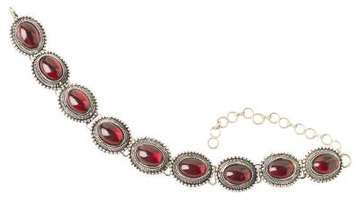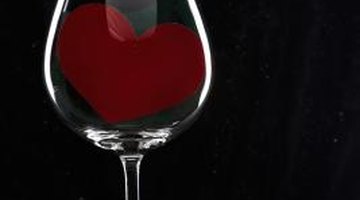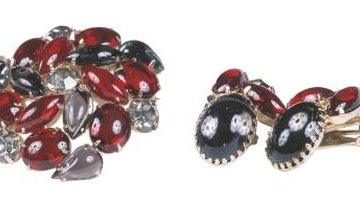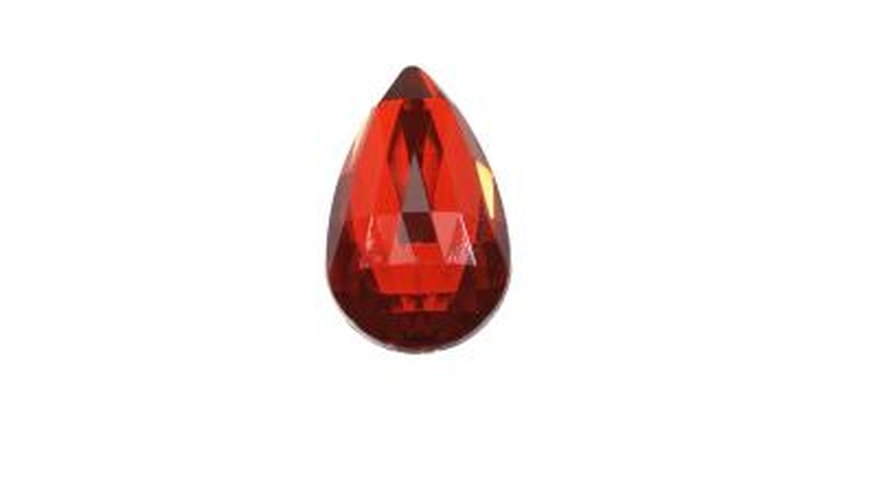The ruby is a translucent, precious gemstone that ranges from bright red to a deep, reddish-brown. Large rubies are even less common than diamonds. Ruby is the birthstone for July and the classic gift for a 40th wedding anniversary. Rare as true love, the precious stone is used extensively in jewellery and extolled in verse for its beauty, colour and romantic symbolism.
Worth Its Weight in Silver

Northern India experienced a great surge in art, culture and imperial strength during the 16th and 17th centuries. During that time, poetry competitions were held before the royal court and a poet was paid his own weight in silver for a winning poem. A fifth-prize poem comprised of 63 couplets written by the poet Kalim on the event of Shah Jahan's second coronation to the Peacock Throne praised the ruby treasures of the king in its verses, stating, "Rubies from thousands of Ceylons and hundreds of Badakhshans did the throne obtain as a gift ere it unveiled its beauty. The light of its rubies mingling with the lustre of diamonds is like the reflection of illuminations in crystal water...the gold of the throne would have melted with the fire of its rubies -- were it not for the water of its lustrous pearls!"
- Northern India experienced a great surge in art, culture and imperial strength during the 16th and 17th centuries.
- A fifth-prize poem comprised of 63 couplets written by the poet Kalim on the event of Shah Jahan's second coronation to the Peacock Throne praised the ruby treasures of the king in its verses, stating, "Rubies from thousands of Ceylons and hundreds of Badakhshans did the throne obtain as a gift ere it unveiled its beauty.
A Cursed Carcanet

In Lord Alfred Tennyson's Epic Poem, "The Last Tournament," a ruby necklace, called a carcanet, is the central object in a tale of love, loss and loyalty in the age of King Arthur. In the poem, Arthur and Lancelot come upon a cliff, whereupon they spy an eagle's nest and hear the cries of a baby. Lancelot scales the cliff to rescue the babe and finds an infant girl wearing the ruby necklace wrapped three times about her neck. Arthur brings the babe to his queen, who loves the child dearly until the babe dies unexpectedly and the queen is heartbroken. She gives the carcanet to Arthur and tells him to give it as a prize in a tournament to a knight pure of heart. The poem goes on to detail the bad fate that follows the necklace throughout the poem until the tragic end is emphasised in the final words, as Arthur asks, "'What art thou?' and the voice about his feet, Sent up an answer, sobbing, 'I am thy fool, And I shall never make thee smile again.'"
- In Lord Alfred Tennyson's Epic Poem, "The Last Tournament," a ruby necklace, called a carcanet, is the central object in a tale of love, loss and loyalty in the age of King Arthur.
Meaning in Metaphor

Ralph Waldo Emerson gives life to rubies brought forth from a mine in his poem, "Rubies." He compares the red gems to drops of frozen wine from the garden of Eden and then to the warm hearts of unknown friends before using them as inspiration to pose the age-old yearning for passionate love in the final stanza: "But fire to thaw that ruddy snow, To break enchanted ice, And give love's scarlet tides to flow, -- When shall that sun arise?"
Contemporary Comparison

"Ruby," by renowned contemporary poet John Fuller of Oxford, England, uses an emerald engagement ring and a pair of ruby earrings to describe his love for his wife on their 40th wedding anniversary. Ruby and emerald contain the same amount of chromium and have a very similar molecular structure. The touching final lines declare his eternal devotion "As I must be, so too will you be, That indistinguishable thing, Both emerald and ruby."
